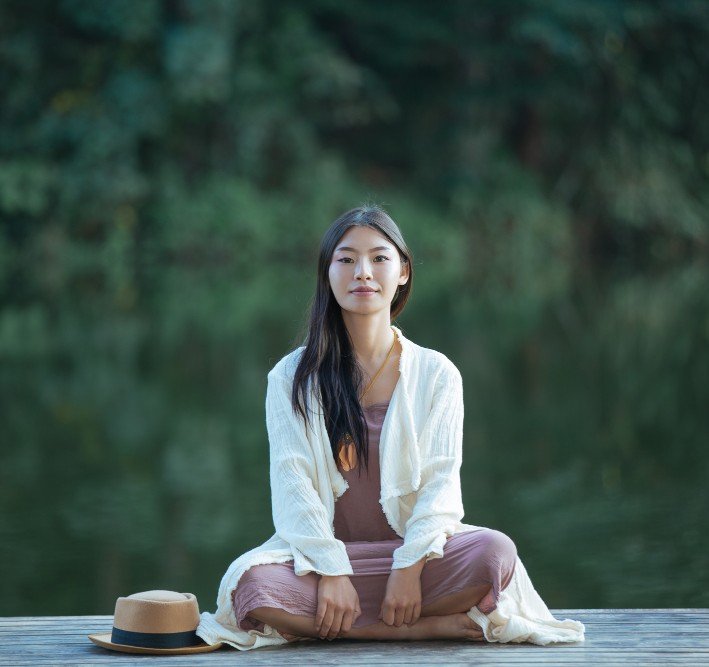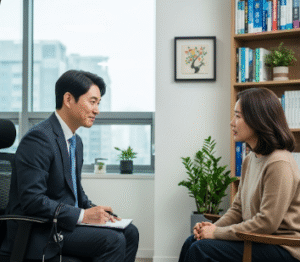In Korea, meditation and mindfulness are not just wellness fads—they are integral to the nation’s spiritual and cultural identity. From traditional Buddhist Seon (Zen) meditation to contemporary practices like Meong (멍) and urban mindfulness centers, Korea offers a diverse range of ways to find calm in a fast-paced society. As modern life accelerates, these ancient and modern methods are helping people reconnect with themselves, reduce stress, and cultivate inner peace.
The Roots of Korean Meditation
Korea’s meditative heritage is rooted in Seon Buddhism, which emphasizes direct experience and awakening rather than theoretical study. The goal is simple yet profound—to understand one’s true nature through stillness and awareness.
One of the most well-known forms is Ganhwa Seon (간화선), a method that uses hwadu, or meditative questions, such as “What is this?” to break habitual thinking and lead the mind toward insight. Unlike guided meditation, Ganhwa Seon encourages self-inquiry and silence as a path to awakening.
Many temples in Korea, including Haeinsa, Songgwangsa, and Musangsa, continue to host structured retreats that involve sitting meditation, chanting, and walking practice. For laypeople, the templestay program offers a chance to experience meditation within monastic life—waking before dawn, eating mindfully, and practicing silence.
Unique Korean Approaches to Mindfulness
➤ Seon Meditation (선명상)
The foundation of most Buddhist mindfulness in Korea, Seon meditation involves sitting quietly, observing the breath, and calming the wandering mind. It focuses on experiencing awareness directly rather than through analysis.
➤ Sundo (선도)
Originating from ancient mountain Taoist traditions, Sundo blends breath control, movement, and meditation. It aims to balance internal energy (ki) and strengthen both body and mind. Sundo emphasizes the connection between breath and vitality, teaching practitioners to cultivate serenity through posture and controlled breathing.
➤ Sunmudo (선무도)
This form of moving meditation integrates martial arts, yoga-like stretching, and deep breathing. Practiced by monks and laypeople, it promotes harmony between strength and softness, helping to release tension and improve mental focus.
➤ Meong (멍)
A newer yet widely adopted Korean concept, Meong refers to simply staring into space without doing anything—resting the mind in a blank, relaxed state. It encourages mindfulness through stillness, allowing thoughts to settle naturally. The idea has gained popularity among younger generations who see it as an antidote to digital overload and constant stimulation.
➤ Won Buddhism (원불교)
A modern reform movement within Buddhism, Won Buddhism teaches meditation that is easily applied to daily life. Instead of long retreats, practitioners integrate mindfulness into work, relationships, and simple routines. Its accessible, practical approach makes it appealing to busy modern professionals.
Modern Adaptations of Traditional Practice
Korea has skillfully merged tradition with technology. Many temples now offer online guided sessions and digital retreats, making ancient practices accessible to people who cannot travel. Urban meditation centers in Seoul, Busan, and Jeju provide drop-in mindfulness classes after work hours.
Smartphone apps and wellness platforms are integrating Korean meditation methods such as Seon and breathing techniques. Office workers can attend lunchtime sessions or join virtual meditation rooms where participants share silence together. This flexibility allows meditation to fit seamlessly into modern life.
The Science Behind Korean Mindfulness
Korean psychologists and neuroscientists have increasingly studied the impact of meditation on mental health. Regular practice has been linked to:
➡️ Lower stress and anxiety levels
➡️ Improved sleep quality and emotional regulation
➡️ Enhanced concentration and memory
➡️ Better resilience in high-pressure work environments
These findings have led hospitals, schools, and corporations in Korea to include mindfulness programs as part of stress management and mental wellness initiatives.
Why Korean Meditation Works
What makes the Korean approach unique is its integration—it’s not limited to sitting in silence but extends into daily living. Whether one is eating, walking, or working, mindfulness is about being fully present. Korean traditions emphasize balance—between stillness and movement, inner awareness and outward engagement.
The emphasis on simplicity also makes it sustainable. Practices like Meong or mindful breathing require no special equipment or setting. They can be done anywhere, from a temple courtyard to a busy office.
Steps to Practice Korean-Style Mindfulness
1. Start Small: Begin with 10 minutes of seated breathing each day. Focus on inhaling slowly through the nose and exhaling through the mouth.
2. Add a Daily Ritual: Have tea quietly, walk slowly, or watch nature without distraction. Treat these as mini meditations.
3. Practice Meong: Spend a few minutes looking out a window or at a tree, letting your thoughts drift naturally.
4. Join a Community: Seek local meditation groups or temple programs—group energy helps maintain discipline.
5. Reflect Each Night: End your day with a short gratitude reflection or prayer for peace and clarity.
Finding Calm in a Busy World
As Korea continues to evolve technologically and socially, its meditation culture serves as a gentle reminder that inner peace begins with awareness. Whether through ancient Seon meditation, modern mindfulness apps, or a few minutes of Meong, Koreans are showing that serenity is possible even in a fast-moving society.
Korea’s approach to mindfulness is more than a practice—it’s a philosophy of living with presence, simplicity, and compassion. It teaches that peace doesn’t come from escaping life’s pace but from learning to stay still within it.













